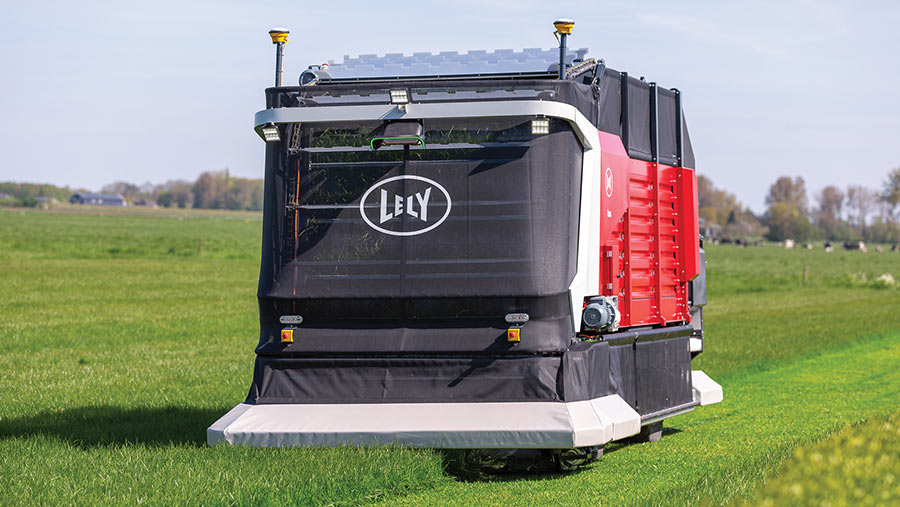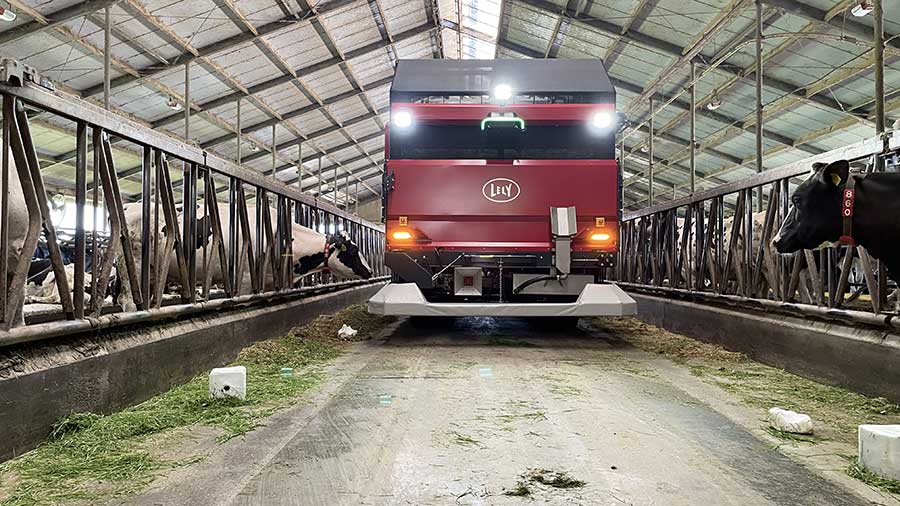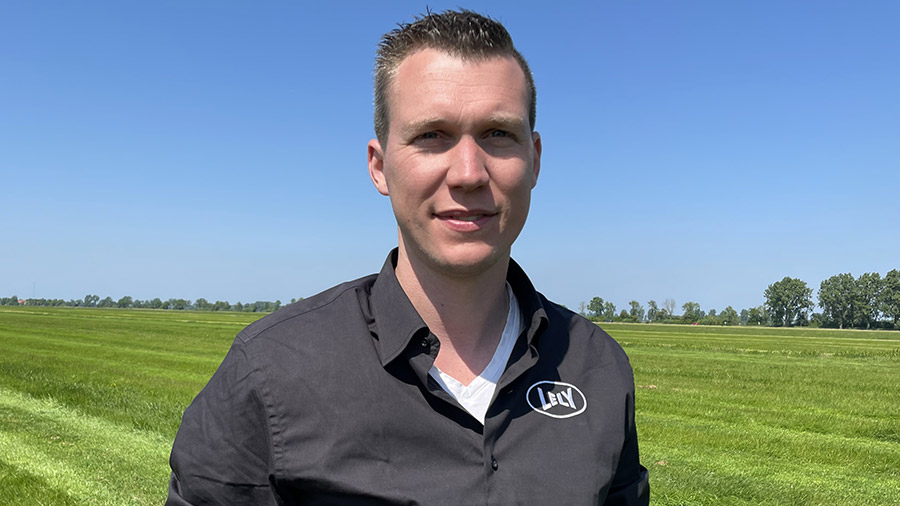Video: Lely revolutionises zero grazing with autonomous Exos
 The Exos can range up to a mile from its base station © Rhian Price
The Exos can range up to a mile from its base station © Rhian Price Dutch firm Lely has put the finishing touches to its self-propelled grass harvester and feeder, which is set to go on sale in the Netherlands next year.
The battery powered Exos, unveiled in 2020, takes a new approach to zero grazing by cutting, carting and dispensing grass to housed cows entirely autonomously.
It can complete up to 12 field sorties every day, with the material then immediately dished out to hungry mouths along the feed barrier.
See also: Video: How a robotic suckler beef feeding system cut costs by 75%
This, the company says, is the most efficient means of maximising the benefit of home-grown forage, with the end product reckoned to be 15-20% higher in nutritional value compared with silage.
The machine runs on a guidance system and can travel up to a mile from the yard to cut and collect the grass, with a series of externally mounted cameras ensuring it doesn’t collide with any unexpected obstacles.
It weighs just 4.4t when fully loaded, which is significantly lighter than an equivalent tractor and forage wagon, and is shod with 500mm-wide flotation tyres to minimise sward damage and soil compaction.
According to Lely, this means buyers could extend their zero grazing season by up to two months.
Incorporated into the design are a double-knife cutting system designed to encourage rapid grass re-growth, and a series of nozzles that can dispense liquid fertiliser as it passes.
Once back at the shed, the Exos uses ultrasonic sensors to follow the feed fence as it jettisons fresh grass.
The limiting factor here is that the feed passage needs to be at least 4m wide, and it has to work in combination with either a Vector or Juno automatic feed pusher.
As well as keeping the passage clean, these measure intakes that help determine how much grass needs to be harvested for future servings.
When not in work, it will return to the docking station to recharge. This takes up to 30mins, after which it has the capacity to run for 90mins.
Blokland Farm, Goudriaan, Netherlands

© Rhian Price
The Exos has fully automated the feeding process, and lowered concentrate use, at Lely’s 180-cow Blokland Dairy test farm since it was installed 2018.
It operates alongside a Vector robotic feeding system that delivers a total mixed ration (TMR) to the cows.
Milkers are given fodder beet pulp and maize, which is topped up with 7.5kg of fresh grass to deliver a daily ration totalling 20kg of dry matter.
Milking is completed by three Lely Astronauts, with the cows currently averaging 35.5 litres daily from 2.8 visits. Half of the milkers are also given free access to grass from April until September.
The farm’s 308MW solar array means the facility is entirely self-sufficient in electricity.
This is used to run both the Vector and Exos and, as a result, diesel use is limited to filling the Vector feed bunker and harvesting maize and grass silage – of which four cuts are taken annually.
Concentrate use has been cut by 1kg a cow a day, on average, since feeding fresh grass.
This has been helped by extending the grazing season by two months, with the Exos able to travel on the farm’s 45ha of grass, made up of light peatland soils, from April until November without causing damage.
Korstiaan Blokland, the farm’s co-owner and Exos director of innovation, says grass re-growth is faster compared with fields mown conventionally for silage, with areas typically rested for three weeks after cutting.
Almost half of the crop is now harvested by the Exos and fed fresh to the cows.
“It makes optimal use of grass growth and intakes by not mowing all the fields at once but mowing every day,” he says. “As a result, we are less dependent on protein imports and make better use of minerals on the farm.”

Korstiaan Blokland © Rhian Price

